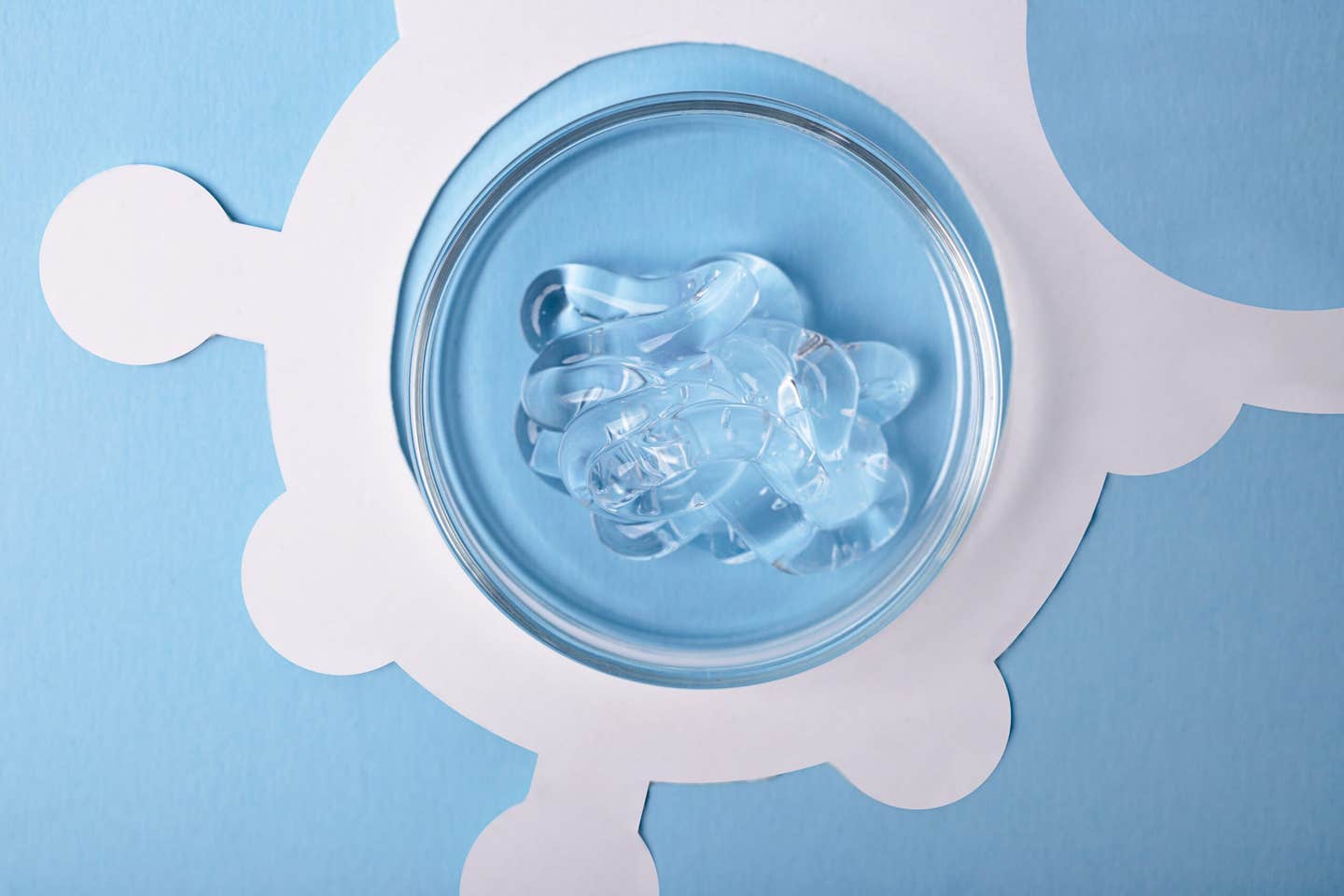Garlic mouthwash is as effective as leading mouthwashes, with a catch
Review finds high strength garlic mouthwash can rival chlorhexidine’s antimicrobial power, but taste and discomfort may limit everyday use.

 Edited By: Joseph Shavit
Edited By: Joseph Shavit

A new systematic review finds that concentrated garlic extract mouthwash can match chlorhexidine against oral bacteria, raising hopes for a natural alternative. (CREDIT: AI-generated / The Brighter Side of News)
For many people, mouthwash is a quick swish and spit before bed. You do it almost on autopilot, trusting that sharp medicinal taste to keep your mouth clean. But behind that routine sits a serious debate about safety, side effects and the growing search for natural options.
Why Scientists Are Rethinking Standard Mouthwash
For decades, dentists have relied on chlorhexidine. Many describe it as the “gold standard” antimicrobial rinse for fighting plaque and gum disease. It works well, but it has drawbacks that can wear on you over time. People report staining of teeth, changes in taste and dry or irritated mouth tissues. Researchers also worry about antimicrobial resistance when strong chemicals see heavy use.
At the same time, garlic has built a reputation as one of nature’s most powerful natural antimicrobials. It contains allicin, a compound that can damage or kill bacteria and fungi. Global demand reflects that interest. In 2024, worldwide consumption of garlic reached about 30 million metric tons. China alone produced nearly 80 percent of the supply, and the garlic extract market was worth more than 15 billion dollars.
With that background, a group of medical scientists at the University of Sharjah asked a clear question. Could garlic extract mouthwash work as well as chlorhexidine for controlling oral microbes.
How the Researchers Put Garlic to the Test
The team did not run a single clinic trial. Instead, they stepped back and reviewed the existing evidence. Their work, published in the Journal of Herbal Medicine, followed PRISMA 2020 guidelines. Those rules help reviewers search the literature in a complete and transparent way. They also used the PICO framework, which forces scientists to define their population, intervention, comparison and outcomes before they start.
In January 2024, the researchers searched six large databases and found 389 potentially relevant studies. Manual checking of reference lists added 13 more. After they removed duplicates and filtered out weak or irrelevant work, only five studies met all of their criteria. Those five included randomized controlled trials and clinical studies that actually put garlic extract mouthwash head to head with chlorhexidine in people.
The research designs varied. Some studies tested different concentrations of garlic extract. Others used different rinsing schedules or follow up times. Overall, the team rated the risk of bias as low to moderate, which means you should read the results with interest, but also with some care.
What the Studies Say About Garlic Versus Chlorhexidine
Across the trials, a clear pattern emerged. When researchers used higher concentrations of garlic extract, the mouthwash reduced bacteria to a degree similar to chlorhexidine. In some cases, garlic performed slightly better. In other cases, the chemical rinse kept plaque or salivary pH under better control.
“The effectiveness varied based on mouthwash concentration and duration of application, contributing to differences in outcomes,” the review reported. That means the details matter. How strong the rinse is, and how long you use it, can change which product comes out ahead.
One consistent finding stood out. Garlic-based rinses produced significant drops in bacterial counts from baseline in several studies. Those drops matched, or nearly matched, the reductions seen with chlorhexidine. Taken together, the data support the idea that garlic extract can act as a true antimicrobial agent in your mouth rather than a weak home remedy.
Side Effects, Comfort and Real Life Use
Effectiveness is not the only thing that matters to you in a mouthwash. Comfort and taste can decide whether you stick with a product or quietly stop using it.
Here, garlic extract showed some downsides. Participants in several studies reported a burning sensation, strong smell and unpleasant taste. Those reactions were usually milder than staining or taste changes linked to chlorhexidine, but they still affected how people felt about the rinse.
The review notes that these side effects might limit patient willingness to replace chlorhexidine with garlic-based products, even if the antimicrobial performance matches. If you dread the flavor every time you open the bottle, you will probably skip it.
On the other hand, garlic extracts already appear in many over the counter supplements and herbal products. In contrast, chlorhexidine typically requires a prescription from a dentist or physician. Accessibility and cost may push some people toward garlic-based options, even if the experience is less pleasant.
How Garlic Fits Into the Bigger Oral Health Picture
The review places garlic extract in the larger context of oral care. Antimicrobial mouthwashes help you manage conditions such as gingivitis, dental caries, periodontal disease and chronic bad breath. They also support treatment of infections related to dentures or root canals.
The authors cite a long list of studies showing garlic’s activity against bacteria, fungi and some viruses. They also highlight research on garlic in denture stomatitis, dentinal tubule disinfection and intracanal medication. Many of those studies take place in vitro, in dishes and tubes rather than human mouths. Methods differ, and results are not always easy to compare.
That lack of standardization creates a gap. Scientists still need more consistent trials in real patients before they can write strong, evidence based guidelines for garlic-based oral care. For now, the best message for you is cautious optimism. Garlic extract has serious antimicrobial power. Under the right conditions, it can match a leading chemical rinse. But the science is not mature enough to claim it as a full replacement.
What Needs to Happen Next
The University of Sharjah team calls for larger, longer and better controlled clinical studies. Those trials should use clearly defined garlic extract preparations, with consistent concentrations and dosing schedules. They also need diverse patient groups and extended follow up to track plaque levels, gum health and any side effects over time.
Researchers will also need to watch for any signs of resistance, both with chlorhexidine and with herbal alternatives. As you rely more on antimicrobial products, you carry the responsibility of using them wisely and only when needed.
Until that evidence arrives, chlorhexidine will likely keep its place as the standard prescription mouthwash. Garlic extract, however, now sits on the horizon as a serious candidate for people who want a more natural option or cannot tolerate chemical rinses.
Practical Implications of the Research
This review gives you and your dentist something new to consider when you talk about mouthwash. It shows that garlic extract is not just folklore. At higher concentrations, it can reach antimicrobial results similar to a leading chemical rinse. That opens the door to gentler, plant based products for people who struggle with staining, taste changes or sensitivity from chlorhexidine.
For public health, garlic-based rinses could offer a more accessible option in places where prescriptions are hard to obtain or expensive. Because garlic is already widely grown and processed, local production of herbal mouthwashes may become feasible in low resource settings.
For researchers, the work points to clear priorities. Future trials can test whether tailored garlic formulations, perhaps mixed with other herbal compounds, can increase comfort and reduce odor while keeping strong antimicrobial effects. Scientists can also explore whether rotating or combining natural and synthetic mouthwashes lowers the risk of resistant microbes.
In the long run, the goal is simple. You should have safe, effective and affordable choices for keeping your mouth healthy. This study nudges the field closer to that future by putting a familiar kitchen ingredient on the scientific map as a serious contender.
Research findings are available online in the Journal of Herbal Medicine.
Related Stories
- Saliva-releasing gel may offer long-term relief for dry mouth sufferers
- Bacteria in your mouth linked to memory and dementia risk
- New artificial mouth helps researchers understand oral processing of foods
Like these kind of feel good stories? Get The Brighter Side of News' newsletter.
Rebecca Shavit
Science & Technology Journalist | Innovation Storyteller
Based in Los Angeles, Rebecca Shavit is a dedicated science and technology journalist who writes for The Brighter Side of News, an online publication committed to highlighting positive and transformative stories from around the world. With a passion for uncovering groundbreaking discoveries and innovations, she brings to light the scientific advancements shaping a better future. Her reporting spans a wide range of topics, from cutting-edge medical breakthroughs and artificial intelligence to green technology and space exploration. With a keen ability to translate complex concepts into engaging and accessible stories, she makes science and innovation relatable to a broad audience.



